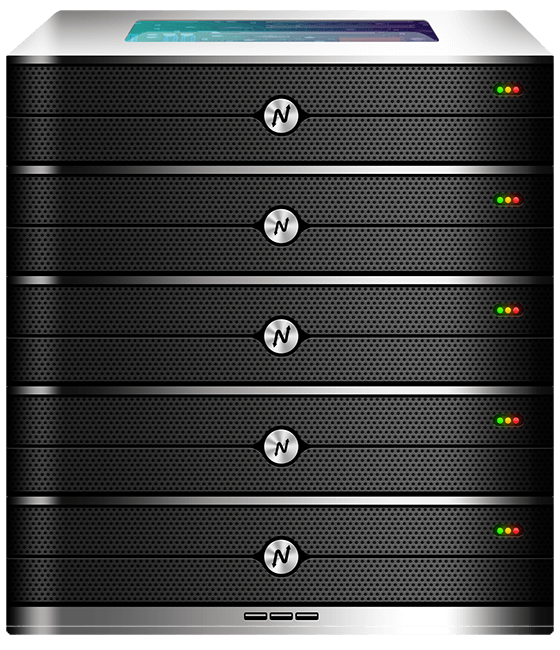If you need to windows clear dns cache today, this guide makes it fast and foolproof. DNS caching is essential for speed, but stale records cause broken sites, failed migrations, and frustrating propagation delays. Knowing how to windows clear dns cache helps IT teams, developers, and support staff recover quickly when a DNS update doesn’t appear. Choosing Indian-hosted infrastructure like XenaxCloud also helps, because regional DNS resolution and strong peering reduce propagation time across Asia while keeping costs low and performance competitive globally. In this article you’ll get clear, practical steps for Windows, brief Mac instructions, browser-specific tips, server-side checks, and best practices so your DNS troubleshooting is repeatable and predictable.
Why you should learn how to windows clear dns cache (and when to do it)
DNS resolvers cache answers to speed up browsing and reduce network load. However, when you change DNS records — moving a site, updating MX records, or switching CDNs — cached entries can point users to the old location. That’s when you need to windows clear dns cache on clients, servers, or local machines.
Common scenarios to run a windows clear dns cache include domain migrations, SSL certificate installs, subdomain creation, and troubleshooting intermittent access errors. Clearing DNS cache is a lightweight, first-step diagnostic that eliminates client-side caching as a cause before you dive into more complex network or hosting issues.
Note: clearing local cache does not change how global recursive resolvers behave. Use cache clearing as a local troubleshooting step while you wait for global TTLs to expire, or when paired with a DNS TTL reduction before planned changes.

How to windows clear dns cache: step-by-step for all Windows versions
If you want to windows clear dns cache on a modern PC or server, follow these steps. They apply to Windows 10, 11, and recent Windows Server editions.
- Open an elevated Command Prompt or PowerShell. Right-click the Start button and choose “Windows Terminal (Admin)” or search for cmd → right-click → Run as administrator.
- Run the flush command:
ipconfig /displaydns
You should see: “Successfully flushed the DNS Resolver Cache.”
- Verify the cache has been cleared:
ipconfig /flushdns
If it shows very few or no entries, the cache is cleared.
- Optional: restart the DNS Client service (helps in some server scenarios):
ipconfig /displaydns
- If the issue persists, clear browser and app caches, or restart the machine to ensure any resident services reload network settings.
These steps are the core of how to windows clear dns cache and resolve many DNS-related client problems within minutes.
Browser and application specifics (you may need more than just windows clear dns cache)
Sometimes the browser or an app keeps its own DNS or content cache even after you windows clear dns cache. Try these quick follow-ups:
- Chrome: open
chrome://net-internals/#dns→ click “Clear host cache”. Also go tochrome://net-internals/#sockets→ “Flush socket pools”. - Firefox: type
about:networking#dnsand click “Clear DNS Cache”, or simply restart the browser. - Edge and Chromium-based browsers follow Chrome steps.
- Mobile apps: closing and restarting the app usually clears internal caches; a device reboot clears system caches.
If you need to deal with multiple client platforms, include the browser flush steps in your support runbook in addition to the windows clear dns cache command.
How to clear DNS cache on Mac and Linux (short reference)
While the primary topic is windows clear dns cache, cross-platform troubleshooting is common. For quick reference:
- macOS (Big Sur and later):
sudo dscacheutil -flushcache; sudo killall -HUP mDNSResponder
- macOS (older versions) may use different mDNSResponder commands.
- Linux (systemd-resolved):
sudo systemd-resolve --flush-caches
or restart the nscd service:
sudo service nscd restart
Include clear dns cache mac in cross-platform support documentation alongside windows steps so your team can handle all end-users.
Server-side checks: when windows clear dns cache is not enough
A local cache flush is often necessary but not sufficient. If users still see outdated IPs after you windows clear dns cache, inspect server-side and network layers.
- Check authoritative DNS: Use
dig +trace yourdomain.comto confirm the authoritative name servers are returning the new record. - Verify TTLs: Lower TTL temporarily (to 300 seconds) before making planned changes so propagation completes faster. After changes stabilize, increase TTL for efficiency.
- Inspect resolver behavior: Public resolvers (Google 8.8.8.8, Cloudflare 1.1.1.1) may respect TTLs differently. Test against multiple public resolvers.
- CDN and edge caching: If you use a CDN, purge its DNS/edge cache or update origin settings. CDN caches sometimes hold references that appear as DNS problems.
- Email and MX propagation: Mail can still route to old MX servers until global caches expire; coordinate migrations with careful MX priority changes.
- Firewall, hosts file, or VPNs: Local hosts file entries or corporate VPN DNS overrides can mask changes. Ask users to check
C:\Windows\System32\drivers\etc\hostsif problems persist.
These server-side checks complement the local windows clear dns cache action and help you identify where propagation is stalled.
Best-practice troubleshooting workflow (include windows clear dns cache in your runbook)
A repeatable workflow reduces time-to-fix. Use the following checklist for DNS incidents and include the windows clear dns cache step early.
- Confirm the problem: ask for precise error messages and affected endpoints.
- Reproduce locally: try
nslookupordigfrom your machine and an external service. - Run
ipconfig /flushdnsto windows clear dns cache on the affected client. - Test in multiple networks: local ISP, mobile network, and a public resolver.
- Check authoritative records with
dig +trace. - Inspect CDN/edge and purge caches if necessary.
- Look for host overrides (hosts file, proxy, VPN).
- If unresolved, open a ticket with DNS provider and hosting support, including collected evidence.
Document this flow in your team runbooks so everyone knows how and when to run the windows clear dns cache command and what to check next.
Comparison: Indian DNS/Servers vs US, Canada, Germany, UAE
Use this comparison to decide where to host DNS origins and authoritative name servers. It focuses on practical operational metrics rather than pricing.
| Metric | India | US/Canada | Germany | UAE |
|---|---|---|---|---|
| Latency to APAC | Low — excellent for Asia users | Higher to APAC, lower to Americas | Moderate — best for Europe | Good for Middle East & APAC |
| DNS propagation visibility | Strong regional peering; quick propagation in APAC | Very broad visibility across Americas | Solid European visibility | Good regional caching and peering |
| Support & provisioning | 24/7 regional support, fast provisioning | Wide managed DNS options | Enterprise SLAs and compliance | Localised rapid provisioning |
| Best for | APAC audiences and cost-sensitive global sites | Americas-centric audiences | European compliance-oriented sites | Middle East and APAC hybrid strategies |
Hosting authoritative DNS in India can be particularly effective when serving Asia-Pacific users because regional resolvers will see updated records faster, reducing the number of users who need to windows clear dns cache manually.
Use cases and examples: real incidents where windows clear dns cache helped
Example 1 — SSL migration: A nonprofit moved to new servers and updated A records. Some volunteers still saw the old site. After having them run ipconfig /flushdns to windows clear dns cache and purge browser cache, their browsers connected to the new host within minutes.
Example 2 — MX migration: A company updated MX priority for a mail provider. During testing, QA still received mail at the old host. Flushing DNS on test hosts and checking dig against multiple public resolvers revealed some ISPs were still caching — coordination and TTL reduction before the change fixed it.
Example 3 — CDN origin change: A web app switched origin servers behind a CDN. Developers seeing the old origin had to windows clear dns cache and flush CDN edge caches to ensure all traffic reached the new backend.
These examples show how windows clear dns cache is frequently a quick, necessary step in broader DNS change procedures.
Security and compliance notes when you windows clear dns cache
Flushing DNS is low risk, but keep these security points in mind:
- Avoid sharing raw DNS logs publicly; they may include internal hostnames.
- When troubleshooting customer or production issues, follow access and privacy policies.
- If you suspect DNS poisoning or spoofing, escalate to your security team; simply running windows clear dns cache is not enough for an active attack.
- Use DNSSEC for authoritative zones when possible to reduce spoofing risk.
Including windows clear dns cache in normal operations is safe; ensure you also include incident response steps for suspected malicious activity.
FAQ —
How do I windows clear dns cache?
How do I windows clear dns cache?
Open an elevated Command Prompt and run ipconfig /flushdns; verify with ipconfig /displaydns.
Will clearing DNS cache force global propagation?
No, windows clear dns cache only affects the local resolver; global propagation depends on TTLs and recursive resolvers.
How do I clear DNS cache on Mac?
Run sudo dscacheutil -flushcache; sudo killall -HUP mDNSResponder or the macOS-specific command for your version.
Why does a site still show the old IP after I windows clear dns cache?
Because upstream recursive resolvers, CDNs, or ISP caches may still hold records until TTLs expire.
Do browsers need separate cache clears after windows clear dns cache?
Often yes; clear the browser cache or flush the browser’s DNS cache (e.g., Chrome’s net internals) for complete results.
Should I reduce TTL before making DNS changes?
Yes, reduce TTL to a low value (e.g., 300 seconds) 48–72 hours before a planned change, then raise it after propagation.
Can I automate windows clear dns cache for many machines?
You can script ipconfig /flushdns and use remote execution or endpoint management tools, but coordinate to avoid mass restarts during business hours.
Recommended XenaxCloud products and shortcodes to support DNS workflows
For teams managing DNS and servers, pairing domains with flexible VPS helps you control DNS and host origins efficiently. For domain management, use XenaxCloud’s Domains console to centralize zone edits and TTL changes. For server control and to avoid proxy header issues that can mask DNS problems, a VPS plan is recommended.
Recommended plans:
- Shared Hosting Silver — 1 Website, 15GB Storage, 100GB Bandwidth, $1.79 — suitable for simple brochure sites where DNS changes are rare.
- Speed KVM VPS 1 — 2 Vcore CPU, 4GB RAM, 40GB Storage, 2TB Bandwidth, $4.79 — ideal for staging and testing DNS changes.
- KVM VPS 2 — 4 Vcore CPU, 8GB RAM, 50GB Storage, 2TB Bandwidth, $8.39 — for production origins requiring more concurrency and reliability.
To make it easy to explore VPS options for origin servers and DNS control, include the VPS promotional shortcode in your page where technical readers evaluate hosting plans:
- 4 GB RAM
- 40 GB SSD Storage
- 2 TB Bandwidth
- 1 IPV4 & IPV6
For centralized domain management and to edit TTLs quickly, visit the Domains product page. (Internal link: https://xenaxcloud.com/domain/)
Conclusion —
Learning how to windows clear dns cache is a small but powerful skill that speeds DNS troubleshooting and reduces downtime after DNS changes. Use the ipconfig /flushdns command as your first diagnostic step, pair it with browser and Mac cache clears when needed, and always validate authoritative records with dig or nslookup. When DNS changes are critical, reduce TTLs ahead of time and coordinate with CDNs and mail providers.
If your infrastructure serves Asia-Pacific users, hosting authoritative DNS or origin servers in India via XenaxCloud gives you cost-effective regional performance, strong peering, and scalable options to support global traffic. Try a Speed KVM VPS 1 for staging DNS changes, manage zones from the Domains console, and use the 15-day money-back guarantee to test behavior under real conditions. For immediate hands-on server control and predictable troubleshooting during DNS changes, explore XenaxCloud’s VPS plans and domain services to keep your DNS operations smooth and repeatable.





